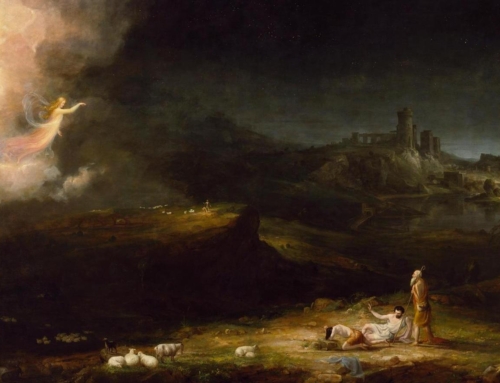“The texts of the New Testament are dense, self-referential, and they don’t give you much in the way of context if you’re not Jewish,” a professor of mine recently declared in class.
Fortunately for gentile Christians like me, receiving the Old Testament in faith and knowing it to the best of our ability helps tremendously to make up for this deficit.
Here is an example in a saying of our Lord of which the context is somewhat obscure:
“Learn a lesson from the fig tree. When its branch becomes tender and sprouts leaves, you know that summer is near. In the same way, when you see all these things, know that he is near, at the gates. Amen, I say to you, this generation will not pass away until all these things have taken place. Heaven and earth will pass away, but my words will not pass away.”
(Matthew 24:32-35, NABRE; cf. Mark 13:28).
In the Bible, fig trees represent Israel, the People of God. The end times did indeed begin (CCC 670, I John 2:18) before the generation contemporary with Jesus’ earthly life passed away. The Jewish Temple, the “heavens and the earth” did pass away, and so will the natural heavens and earth (II Peter 3:10), but Jesus’ words did not pass away and will not.
But what do figs have to do with the end? An additional help is found in the vision of the Prophet Amos in chapter 8.
The Hebrew of Amos contains a wordplay,
כֹּה הִרְאַנִי אֲדֹנָי יְהוִה וְהִנֵּה כְּלוּב קָיִץ
וַיֹּאמֶר מָה-אַתָּה רֹאֶה עָמוֹס, וָאֹמַר כְּלוּב קָיִץ וַיֹּאמֶר יְהוָה אֵלַי בָּא הַקֵּץ אֶל-עַמִּי יִשְׂרָאֵל לֹא-אוֹסִיף עוֹד עֲבוֹר לוֹ
(Amos 8:1-2, Masoretic Text)
The New American Bible Revised Edition does as fine a job of bringing this into English as one could hope for:
This is what the Lord GOD showed me: a basket of end-of-summer fruit.
He asked “What do you see, Amos?” And I answered, “A basket of end-of-summer fruit.” And the LORD said to me: “The end has come for my people Israel; I will forgive them no longer.”
(Amos 8:1-2, NABRE)
In today’s Hebrew pronunciation the words קָיִץ (qayis, “late-summer fruit,” “fig”) and קֵץ (qes, “end”) sound very similar, close enough for a wordplay. In St. Amos’ time, however, they were most likely exact homophones.
Our Lord and the Evangelist who reports his words seem to expect that you will know enough Hebrew to make this connection, because the linguistic play does not communicate in the Gospel’s Greek.
Because of the richness and depth of the Bible, we are frequently confronted with texts that are challenging because we do not immediately see how to make sense of them at all. This is nothing to be dismayed about – even the Old Testament sage Jesus ben Sira indicates that it is true of everyone who takes up the Holy Scriptures (Sirach 39:1-3). However, an enigmatic passage is but an invitation to search for and discover the superabundant wealth of meaning that is stored up for those who are willing to allow their intellect and imagination be drawn into their love for the word of God.
For that is what it is really about – love. The willingness to search out the intelligibility of passages that are initially obscure to us comes from love of God and leads to further love of God. Comes from, because out of love for God we are willing to read his word with the good will requisite for patient exploration of a challenging text. Leads to, because the more access we gain into the inner sancta of the marvelous text, the more we become spiritually at home there and sure to grow in intimate friendship with its Author.
Image: Luis Melendez, Still Life with Figs







